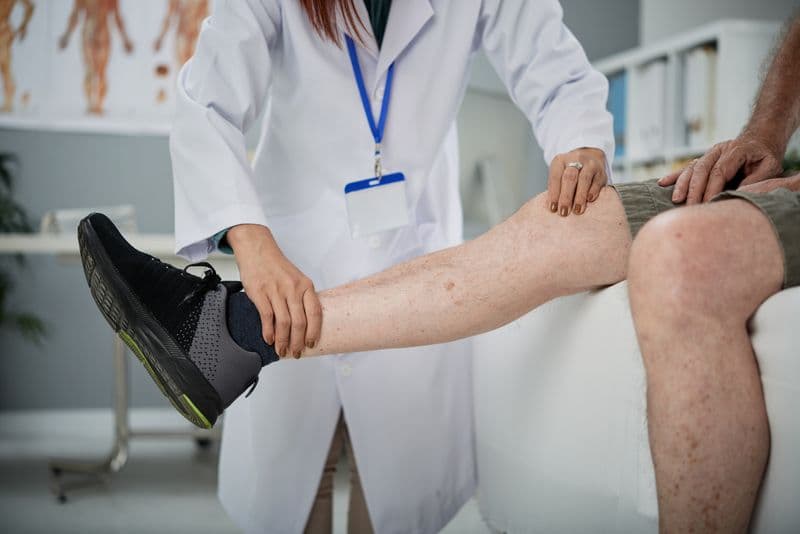
ChondroFiller Explained: A Patient’s Guide to Keeping Your Joints Moving
If cartilage pain is turning stairs into a slog or sidelining your runs, you’re not alone — and you’re not stuck. ChondroFiller is a new class of treatment that aims to repair the damaged surface rather than just soothing it. At London Cartilage Clinic on Harley Street, Prof. Paul Lee uses ChondroFiller within a regeneration-first plan to help people keep their own joints — and keep moving.
What is ChondroFiller?
ChondroFiller is a medical collagen gel that’s injected or placed directly into a cartilage defect, where it gently sets (“gels”) to take the shape of the gap. It’s acellular, which means it doesn’t carry donor cells; instead, it forms a scaffold that attracts your body’s own repair cells to migrate in and build new cartilage, aiming for hyaline-like tissue — the smooth, load-bearing surface your joint needs. Clinical studies show meaningful improvements in patient scores (for example, knee IKDC improvements of around 30 points at 12–36 months) with high MRI repair quality (MOCART scores commonly 70–87).
Safety has been a standout: across more than 19,000 units supplied since 2013 there were no serious device-related incidents reported, and the overall complaint rate was ~0.06% (the commonest technical issue — failure to gel — around 0.01%).
Who is it for (and who isn’t)?
ChondroFiller is designed for focal cartilage defects — well-defined patches of damage — typically up to about 6 cm² in the knee, hip, ankle and certain small joints (e.g., the thumb base). The surrounding cartilage should be reasonably healthy with a firm rim to hold the gel. It’s been used successfully from ICRS grade I to IV lesions and across multiple joints.
It can be suitable for active adults who want to preserve natural joint surfaces and avoid two-stage cell therapy. It’s not for everyone: advanced, diffuse osteoarthritis, “kissing” lesions (damage on opposing surfaces), severe malalignment or uncontrolled inflammation usually call for a different plan. Your suitability is confirmed with focused MRI and a hands-on assessment — the everyday bread-and-butter at London Cartilage Clinic.
How the procedure works
There are two main routes. In small or accessible joints, Prof. Lee can deliver ChondroFiller precisely under imaging guidance as a clinic injection (no incisions). In larger or trickier defects, he uses keyhole (arthroscopic) placement to prepare the defect and place the gel under direct vision. In both cases, two pre-loaded chambers mix as the gel is pushed through a special adapter, which lets the liquid flow to fill every contour before it sets over a few minutes. Keeping the defect surface dry and the joint positioned so the defect faces “up” are key technical steps for reliable gelation and anchoring.
In theatre, some surgeons convert to CO₂ arthroscopy for a truly dry field before filling; the syringe is gently warmed (about 33 °C) for optimal setting — excessive heat can denature collagen and prevent gelation, so temperature control matters. These pearls are baked into Prof. Lee’s technique to safeguard outcomes at LCC.
Recovery and results
The early phase focuses on protection and motion. Expect 48 hours of relative rest, then a period of partial weight-bearing (commonly around six weeks for load-bearing defects) with guided range-of-motion work. Cycling and swimming usually return first; higher-impact running and contact sports are typically staged back towards the 9–12 month mark, once strength and control have been rebuilt.
What do results look like in real life? In prospective series, knee IKDC scores improved from ~48 to ~80 by three years; ankle function (e.g., SF-36 domains) also rose over 6–36 months. Hip data show mHHS gains of ~33 points with marked pain reduction, while MRI confirms robust defect fill and integration. Patients in earlier retrospective cohorts reported ~80% good/very good satisfaction and no device-related complications. These are the kinds of trajectories Prof. Lee targets in his rehab-anchored pathways.
Why choose London Cartilage Clinic
London Cartilage Clinic is built around a simple idea: repair, not replace. Led by Prof. Paul Lee — Consultant Orthopaedic Surgeon and Honorary Professor of Sports Medicine — London Cartilage Clinic is recognised as a UK ICRS teaching centre and brings motion-analysis, MRI and image-guided treatments together on Harley Street. You can access ChondroFiller as a precise injection for suitable small joints, as minimally invasive keyhole surgery for larger defects, or via London Cartilage Clinic's proprietary Liquid Cartilage™ approach for complex cases — combining ChondroFiller with your own signalling cells in a single sitting.
If you’re weighing up your options, start with a discovery call and a targeted MRI. From there, Prof. Lee will map the most efficient route back to confident movement — and most importantly, one that preserves your joint for the long run.

